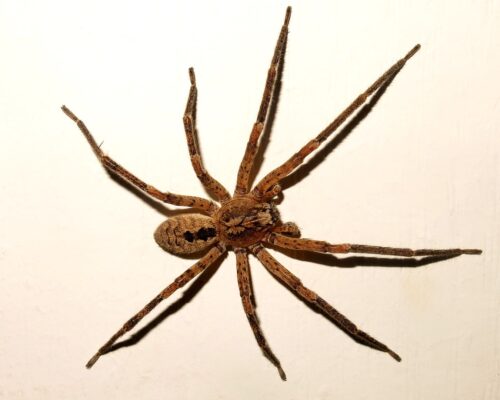The False wolf spider is active at night; during the day the spider hides. In the garden she hides under stones or another sheltered place, in the house she is tucked away in a quiet place with a constant temperature.
The False wolf spider (Zoropsis spinimana) is active at night; during the day the spider hides. In the garden under stones or in some other sheltered place. In the house, she hides in a dark corner with a constant temperature.
The false wolf spider does not make a web and hunts insects, including conspecifics such as the Giant House Spider (Eratigena atrica). The spider belongs in the countries around the Mediterranean Sea. As the climate warms, it can be found more and more northerly, preferring urban habitations because there it is somewhat warmer than in the countryside. The spider is not yet very common in Europe.
The false wolf spider has been found in Belgium and The Netherlands, in the United Kingdom (London and environs) and in the regions around San Francisco in the United States.
The false wolf spider measures almost 2 cm (female) – the males are a lot smaller. With its eight legs extended, the female measures a respectable 5 cm for European spiders. The false wolf spider is a pale light brown.
The false wolf spider resembles a spider of the family wolf spiders (Lycosidae) in appearance, but does not belong to it, hence the “false”.
A spider that feels threatened can bite. The bite has the effect of a bee sting. For people with allergies, a bite can be intense.
Where to find
- Urban environment, not general
Control
Control not necessary.
Prevention
Does not apply.

